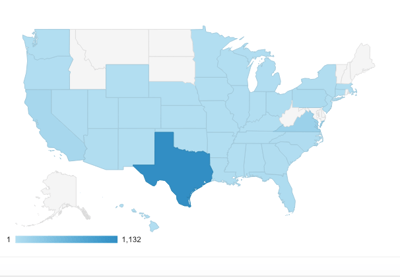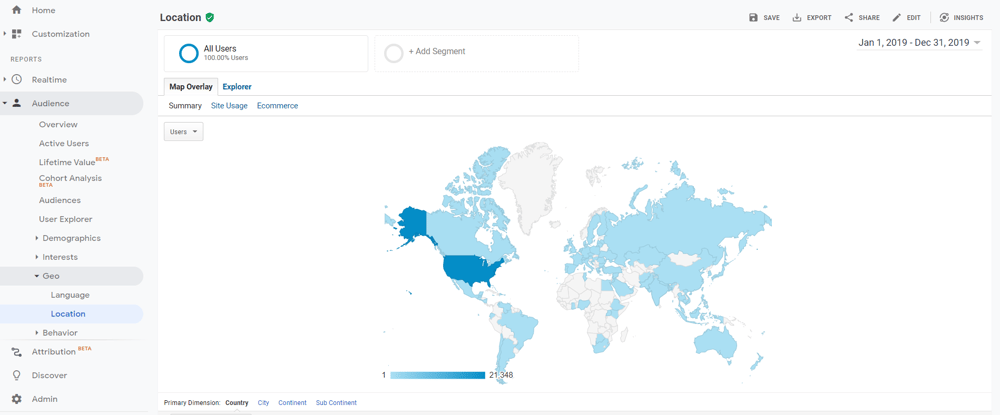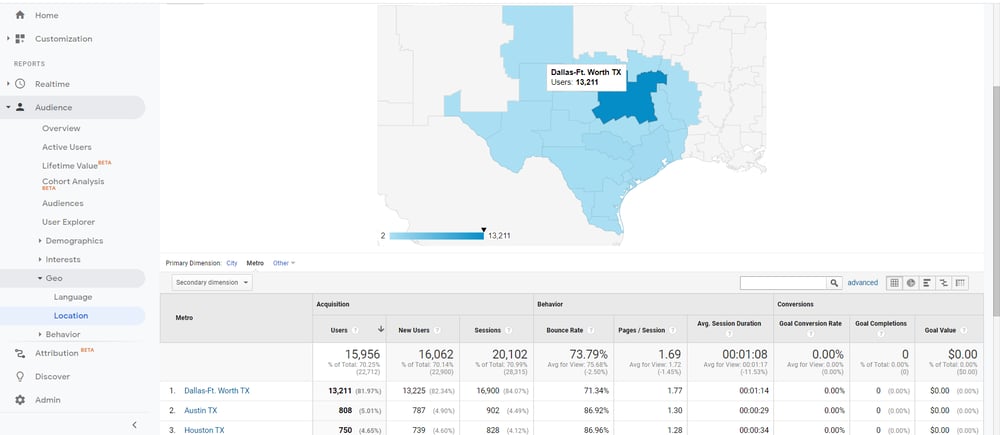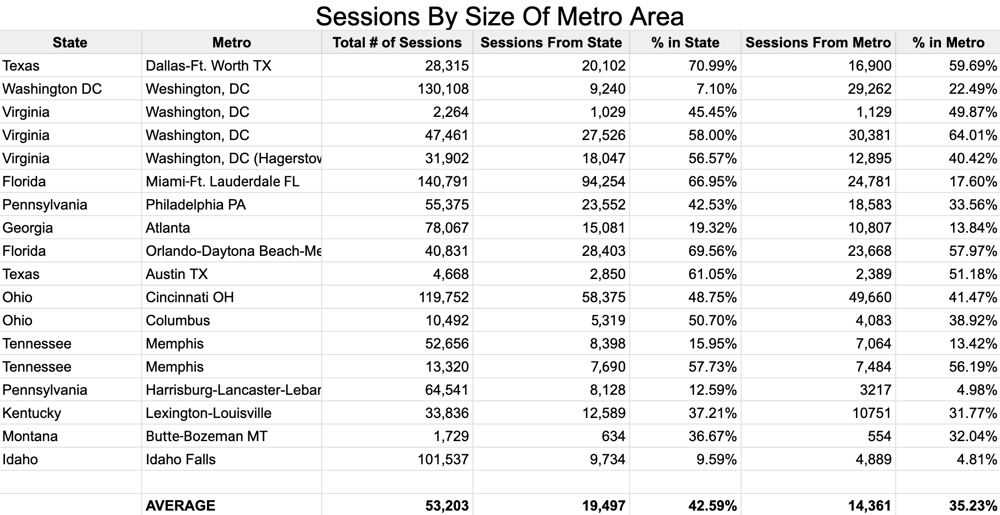Topics: Search Engine Optimization (Seo) Analytics
What Percent of Website Traffic Should Be Local? (Here’s What We Found)
 Author: Chris Heiler
Author: Chris Heiler
 If you are a local business with a goal of generating more leads and sales from your website, then this begins with understanding, first, how much traffic you get to your website each month and, second, where these visitors are coming from.
If you are a local business with a goal of generating more leads and sales from your website, then this begins with understanding, first, how much traffic you get to your website each month and, second, where these visitors are coming from.
We'll focus on the latter in this post.
Whether you're a lawn care operator, landscape contractor or tree service, you're likely to have a well-defined local area you market, sell and perform your services. For this reason it's common sense that you would want the majority of people visiting your website to be located in this fertile area.
But how many of these visitors should be local? What is a reasonable expectation?
Because we've asked ourselves these same questions when working with our many green industry clients over the years, we decided to analyze the data available to us.
In 2017 we performed a similar analysis of data from 2016, and we wanted to update this article with an analysis of our data from 2019.
We looked at 18 companies in the lawn and landscape industry that we've worked with in the past or are currently working with.
We had two main questions we were hoping to find answers to:
1. Is there a benchmark percentage that lawn and landscape industry companies could evaluate their own website traffic against?
2. How does the size of a company's market (measured by metro area) influence the percentage of website traffic from that specific area?
We'll get to our findings, but first, I want to show you how to access this data in Google Analytics.
How to find your local visitor data in Google Analytics
You should have access to view your Google Analytics account, even if an outside marketing agency or SEO provider set it up for you. If you don’t have access currently, then request it from your provider. If you don't have a Google Analytics account then go here to create one. It's free.
Here are the steps:
1. Log into your Google Analytics account and in the sidebar select “Audience”, then “Geo—>Location”.
2. Set your date range. For this study I chose Jan 1, 2019-Dec 31, 2019.

3. Record your total number of Sessions.
4. Click on United States and select your state.
5. Sort by “Metro”.

6. Divide the number of sessions from your metro by the total number of sessions. This will give you your percentage.
What we found in our analysis
We analyzed 18 companies in the lawn and landscape industry from 15 different states over the same period of 12 months: January 1, 2019 to December 31, 2019.
We evaluated traffic by "metro" instead of "city" to make the data collection easier and more reliable. You can dig deeper into cities and towns if you do this on your own.
The screenshot below shows our findings. These companies are listed by metro area, largest to smallest.
 Let's jump back to our original questions and see if we can answer them.
Let's jump back to our original questions and see if we can answer them.
First, is there a benchmark percentage that lawn and landscape industry companies could evaluate their own website traffic against?
Looking at the traffic from 2019, we found that an average of 35% of website traffic came from users in the local metro area. In 2016, 31.5% of website traffic came from users in the local metro area.
The 3.5% increase in local traffic is not a surprise, and it will most likely continue to increase due to many factors including Google customizing search results based on user location, mobile traffic increasing, and an increase in these companies use of Google Ads.
While this is a very small sample size, I still think it holds some useful insight. Based on these findings I suggest a target of 40% local traffic. Less than 25% means you have some work to do on local SEO.
That said, there are exceptions and outliers to this. For example, I can point to two companies in this analysis that show less than 20% of their traffic comes from their local metro. This can easily be explained by the unusually high amount of traffic to their blog from visitors across the United States each month which inevitably skews the percent that is local traffic. So, while our client in Idaho Falls is showing less than 5% of all traffic to be local, they are still getting nearly 5,000 sessions (i.e.- visits) from their comparatively small metro area.
Every company will be unique and there will be numerous factors that impact this. As you can see, something as simple as a popular blog can have a dramatic impact on the data.
However, the overall concept is straightforward: The more local traffic you generate, the better your chances of generating local leads.
How does the size of a company's market (measured by metro area) influence the percentage of website traffic from that specific area?
This is a tricky one with many variables, but here's my takeaway/hypothesis:
The larger the metro you operate in, the greater percentage of your traffic will come from that metro. If you are in a small metro your percentage of local traffic will be lower.
I think if we had a larger sample size of companies from around the country we would see my theory play out.
So what does all this mean?
Like I mentioned, our sample size was so small that it is hard to make a definitive statement about how much of your website traffic should be from your local area.
That said, it is important to know what this percentage is. Then you can track your improvement as you implement local SEO strategies.
This is important enough to us that we track these numbers each month with our clients.
Dig into your Google Analytics and see where you stand. Feel free to email me your percentage (chris.heiler(at)landscapeleadership.com). I'd love to know where you're at currently.
If you want more insight like this please subscribe to our blog. Just add your email to the form below.




